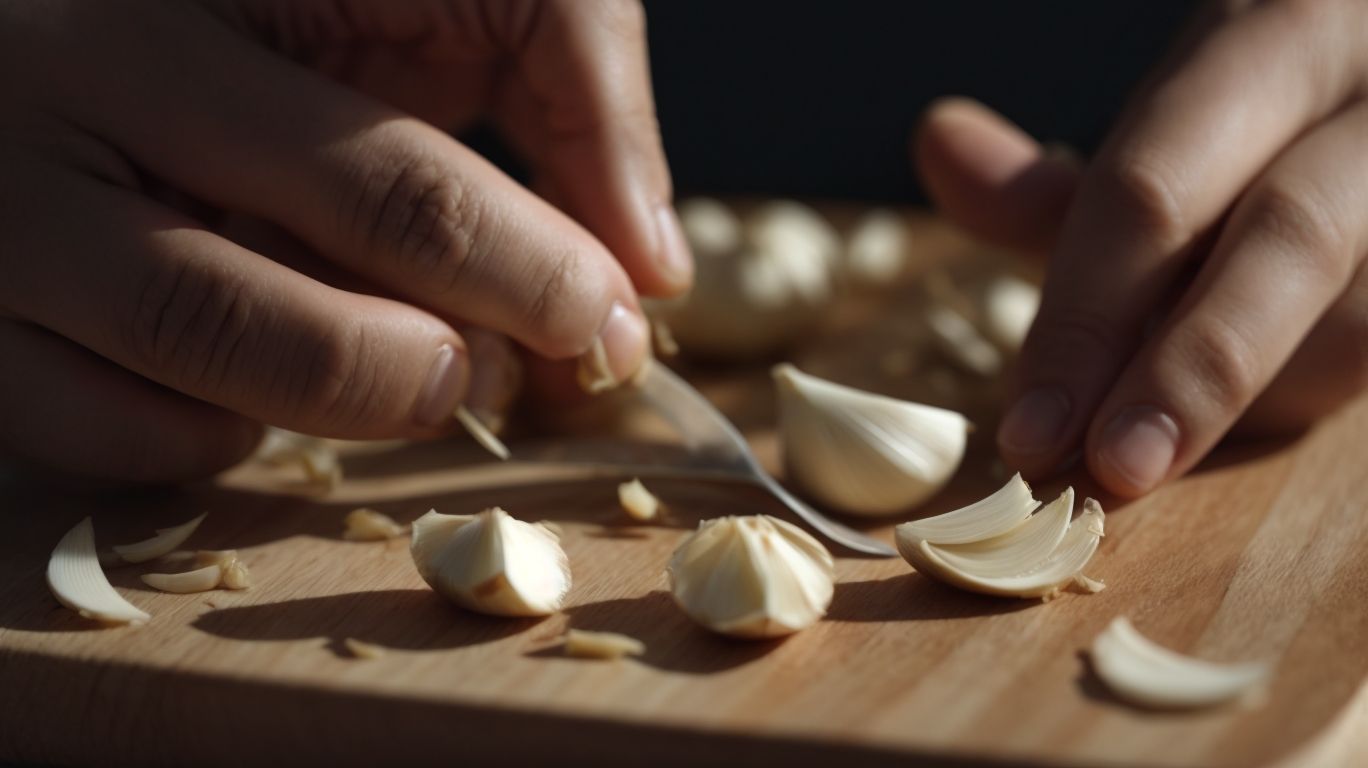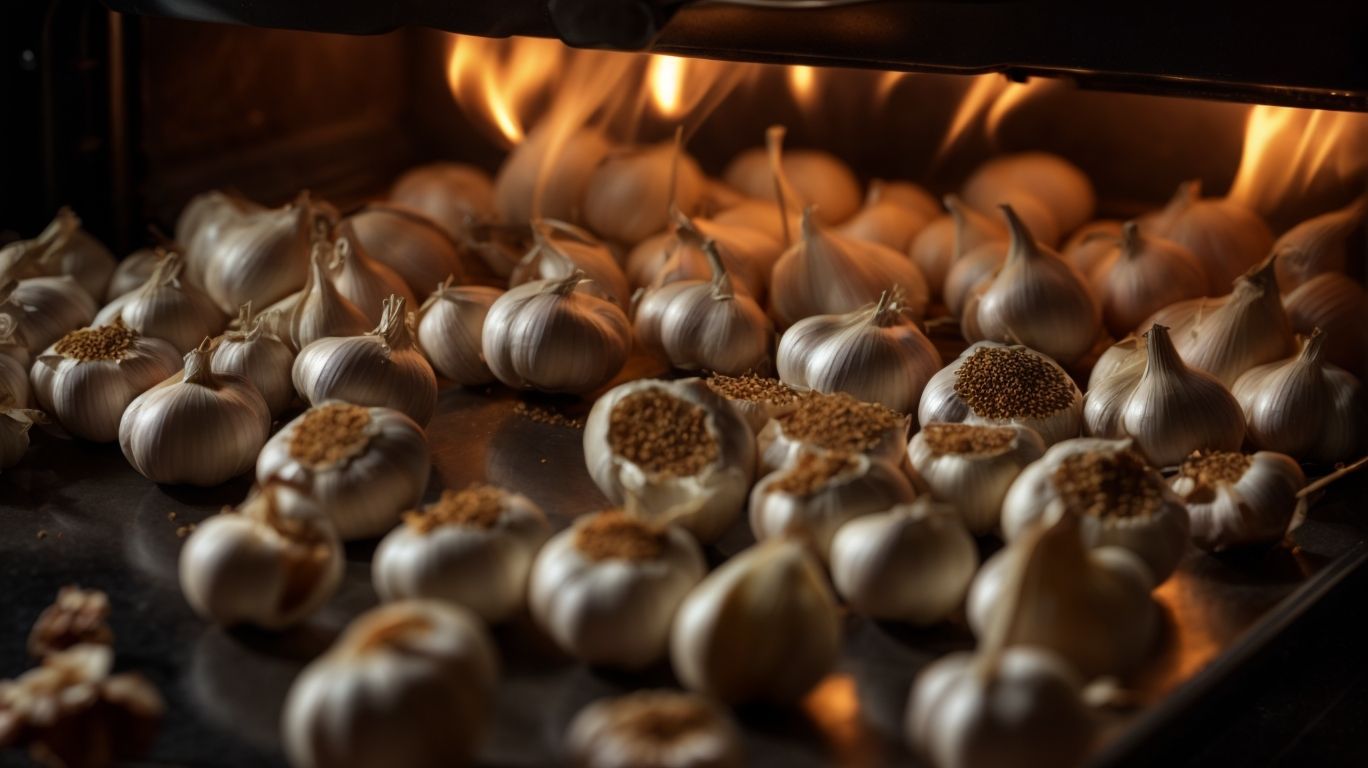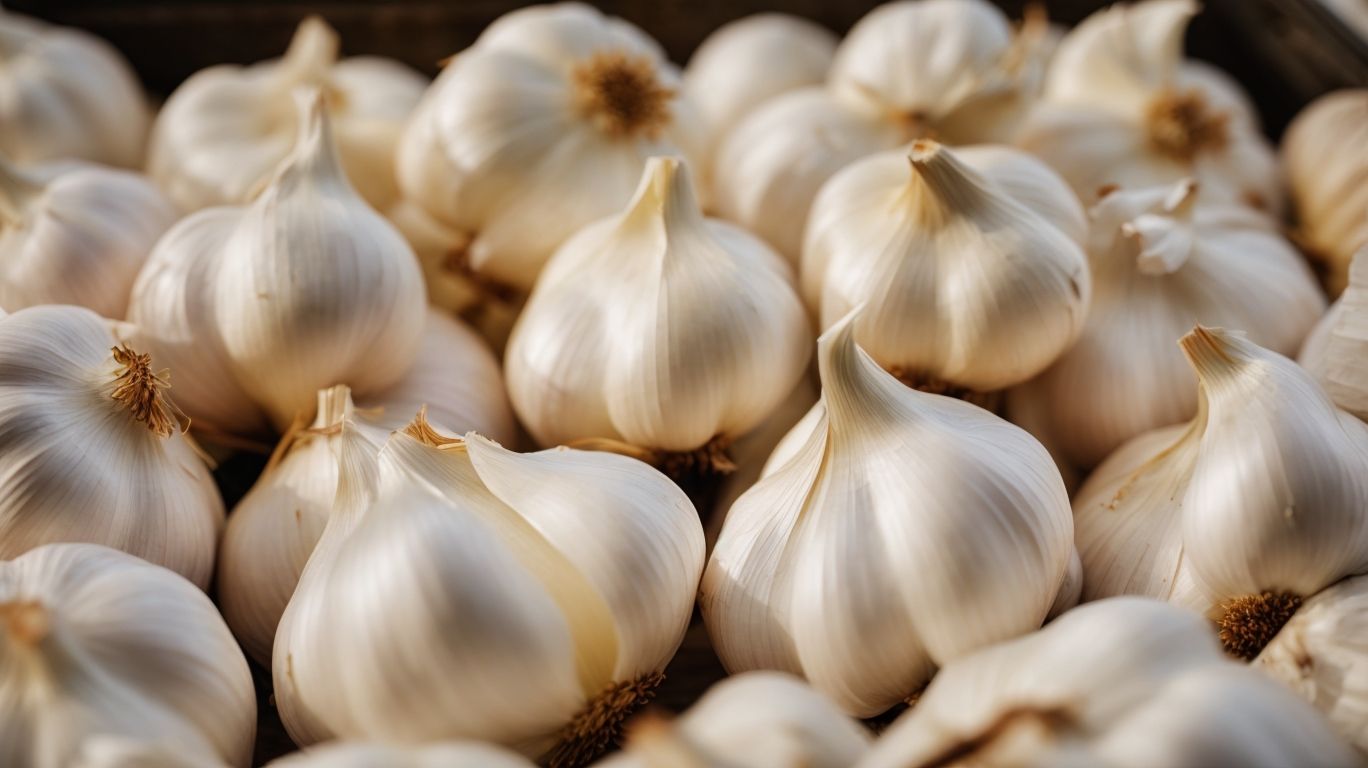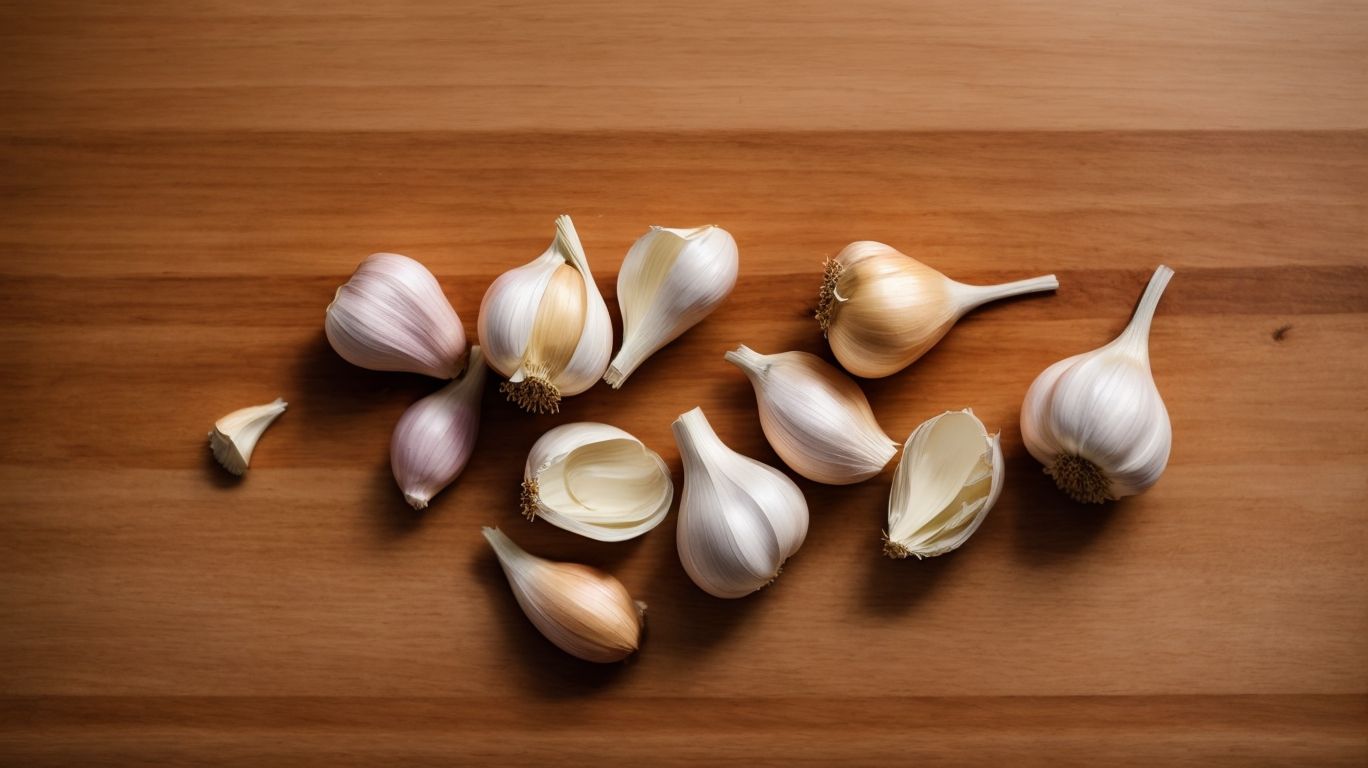How to Bake Garlic Cloves?
Garlic is a versatile ingredient that can elevate the flavor of any dish.
Discover why baking garlic cloves is a game-changer in the kitchen, from enhancing flavor and softening texture to reaping health benefits.
Learn how to prepare garlic cloves for baking, different baking methods, tips for the best results, and creative ways to incorporate baked garlic cloves into your recipes.
Get ready to experiment with this aromatic ingredient and enhance your culinary skills!
Key Takeaways:
Why Bake Garlic Cloves?
Baking garlic cloves offers a myriad of benefits that enhance the flavor, texture, and health profile of this versatile ingredient.
When garlic cloves are baked, they undergo a delectable transformation. The heat of the oven releases a sweet aroma and infuses the garlic with a rich, caramelized flavor that elevates any dish it is added to. The natural sugars in the garlic caramelize, creating a mellow sweetness that balances out the sharpness of raw garlic.
Baking also softens the texture of garlic, turning the cloves into a creamy, spreadable consistency that can be effortlessly incorporated into dips, spreads, or mashed into dishes like mashed potatoes.
Enhances Flavor
Enhancing the flavor of dishes is one of the primary reasons for baking garlic cloves, as it imparts a rich, caramelized taste that elevates the overall culinary experience.
Roasting garlic is a simple yet effective technique that transforms the sharp intensity of raw garlic into a mellow, nutty sweetness. As the garlic cloves slowly cook in the oven, their natural sugars caramelize, creating a deep flavor profile that adds complexity to any dish. This process not only softens the cloves but also develops savory notes that contribute a subtle depth to sauces, spreads, and marinades.
Softens Texture
Baking garlic cloves not only enhances flavor but also softens the texture, transforming the cloves into a creamy, spreadable consistency that adds a luscious touch to dishes.
This process of baking garlic brings out the natural sweetness while minimizing its pungent sharpness, making it more palatable for various recipes. When butter is used during baking along with the garlic, it aids in creating a smoother texture by infusing richness and a velvety mouthfeel to the cloves.
The fat content in the butter mixes with the natural oils of garlic, contributing to the creamy consistency desired for spreads, dips, and sauces. This combination results in a flavor profile that is not only aromatic but also indulgently satisfying.
Health Benefits
Beyond flavor and texture, baking garlic cloves unlocks a host of health benefits, including potential cardiovascular, immune-boosting, and anti-inflammatory properties that make it a nutritional powerhouse.
Garlic is renowned for its high levels of allicin, a sulfur compound that contributes significantly to its health benefits. When baked, the allicin content is preserved, enhancing its ability to support cardiovascular health by helping to regulate blood pressure and cholesterol levels.
In addition, the immune-boosting properties of baked garlic cloves can help fortify the body’s natural defenses, making it a potent ally during cold and flu season. Its anti-inflammatory effects can aid in reducing inflammation in the body, potentially providing relief for conditions such as arthritis.
Preparing Garlic Cloves for Baking

Credits: Poormet.Com – James Walker
Before baking garlic cloves, proper preparation is key, involving peeling, cleaning, and selecting the right ingredients like olive oil and parchment paper for optimal roasting.
To start the preparation process, carefully peel the garlic cloves, ensuring that all outer layers are removed to reveal the fresh cloves inside. One effective method is to place cloves on a cutting board, gently crush them with the flat side of a knife, making it easier to peel off the skin. After peeling, it’s essential to clean the cloves by rinsing them under cold water to remove any dirt or debris, ensuring a clean and flavorful end result.
Peeling and Cleaning Garlic Cloves
Peeling and cleaning garlic cloves is the first step towards achieving perfectly roasted garlic, ensuring each clove is prepped for maximum flavor and aroma, possibly even tying them with kitchen twine for uniform roasting.
To efficiently peel garlic, place the flat side of a chef’s knife over the clove and give it a gentle press; this loosens the skin, making it easier to remove. Removing the skins promptly is crucial to prevent bitterness and unwanted flavors in your dish.
Once peeled, inspect the cloves for any green shoots as they can be bitter. Removing these before roasting ensures a smoother, sweeter flavor in the final dish.
Choosing the Right Baking Dish
Selecting the appropriate baking dish, whether oven-safe or foil-lined, is crucial when preparing garlic cloves for baking, as it influences the roasting process and final flavor profile.
Regarding choosing the right baking dish, considerations like oven temperature play a significant role in achieving the desired outcome. The size and material of the dish can impact how evenly the garlic cloves cook.
Lower temperatures allow for a slow roast, enhancing the garlic’s sweetness, while higher temperatures can result in a quicker caramelization process. Wrapping the dish in foil can help retain moisture, intensifying the garlic’s flavors and preventing it from drying out during baking.
Methods for Baking Garlic Cloves

Credits: Poormet.Com – Donald Baker
There are various methods available for baking garlic cloves, including oven-roasting and grilling, each offering unique flavors and textures to suit different culinary preferences.
Oven-roasting garlic cloves is a popular method that brings out the sweet, caramelized notes of the garlic, making it ideal for dishes like creamy mashed potatoes or pasta sauces. Simply drizzle olive oil over the cloves, wrap them in foil, and bake until soft and fragrant.
On the other hand, grilling garlic cloves imparts a smoky flavor, perfect for adding a charred touch to meats or vegetables. Create a foil packet, place the garlic inside with oil and herbs, and grill until tender and slightly charred.
Roasting Garlic Cloves in the Oven
Oven-roasting garlic cloves is a popular method that yields tender, caramelized cloves perfect for spreading on bread or incorporating into savory dishes.
For this process, preheat your oven to 375°F (190°C).
- Next, peel away the outer layers of the garlic bulb, leaving the cloves intact.
- Cut off the top of the bulb to expose the individual cloves.
- Place the bulb on a piece of foil, drizzle with olive oil, and sprinkle with salt and pepper.
- Wrap the foil loosely around the garlic, creating a pouch.
Roast the garlic in the preheated oven for about 40-45 minutes, or until the cloves are soft and golden brown. The slow cooking process allows the garlic to caramelize, mellowing out its sharp flavor and creating a rich, sweet taste. Once done, let the garlic cool slightly before squeezing out the roasted cloves.
Baking Garlic Cloves in Foil Packets
Baking garlic cloves in foil packets is a convenient method that seals in the flavors and aromas, creating a moist and succulent garlic perfect for use in various recipes.
When garlic is enveloped in foil, it undergoes a gentle cooking process that helps retain its natural juices and prevents it from drying out. This technique not only enhances the flavor but also keeps the garlic soft and easy to spread, making it an ideal ingredient for spreads, dressings, and marinades. You can elevate your dishes with oven-baked garlic by incorporating it in pasta sauces, roasted vegetables, or even mixing it into mashed potatoes for a delicious twist.
Grilling Garlic Cloves
Grilling garlic cloves imparts a smoky, charred flavor that adds depth to dishes like roasted chicken, offering a unique twist on traditional garlic preparations.
When garlic cloves are placed on a hot grill, their natural sugars caramelize, creating a rich and complex taste profile that elevates the entire dish. The smokiness from grilling mingles with the garlic’s pungency, resulting in a harmonious blend of flavors that can enhance various recipes.
Grilled garlic doesn’t just have to be limited to chicken dishes; it can also be incorporated into marinades for meats, added to pasta sauces, or mixed into creamy dips for an added layer of complexity.
Tips for Perfectly Baked Garlic Cloves
Achieving perfectly baked garlic cloves involves mastering key tips such as choosing the right herbs and spices, monitoring cooking times, and adjusting temperatures for optimal results.
When preparing garlic cloves for baking, it’s essential to select fresh and firm cloves to ensure the best flavor. Experiment with various herbs and spices like rosemary, thyme, or paprika to enhance the garlic’s taste. Remember that smaller cloves may cook faster, so adjust your timing accordingly.
For even roasting, consider wrapping the garlic in foil or parchment paper to retain moisture. Preheat your oven to 350°F for a moderate heat that allows the garlic to caramelize without burning. Keep a close eye on the cloves as they bake to prevent overcooking, which can result in a bitter taste.
Adding Herbs and Spices for Flavor
Enhancing the flavor of baked garlic cloves can be achieved by incorporating aromatic herbs and spices like thyme, which complement the natural sweetness of roasted garlic.
Thyme, with its delicate floral notes and earthy undertones, not only adds depth to the garlic’s flavor profile but also infuses a refreshing aroma that tantalizes the senses. When roasted alongside garlic cloves, thyme imparts a mild citrusy hint that balances out the rich, savory notes of the dish.
The pairing of thyme with garlic creates a harmonious blend of flavors that elevates simple roasted garlic into a gourmet culinary experience. This dynamic duo is often used in various cuisines to enhance dishes ranging from roasted meats to vegetable medleys.
Timing and Temperature
Timing and temperature play a crucial role in the baking process of garlic cloves, ensuring that the cloves are roasted to perfection without burning or undercooking.
Garlic cloves require a delicate balance of time and heat to achieve that sweet, caramelized flavor and creamy texture. When baking garlic, it is essential to preheat your oven to around 400°F (200°C) for optimum results. To unlock the full potential of those aromatic cloves, you should bake them for about 30-40 minutes. This timeframe allows for the cloves to soften, develop their flavors, and turn a golden hue, indicating they are ready to be incorporated into various culinary masterpieces.
Checking for Doneness
Determining the doneness of baked garlic cloves involves assessing factors like softness, color, and aroma, ensuring that the cloves are fully roasted and ready for use in culinary creations.
When checking for softness, gently press the garlic clove with a fork or a spoon – a perfectly baked clove should yield easily with a creamy consistency, indicating it’s tender and cooked through. As garlic roasts, its color transforms from white or off-white to a beautiful golden hue, signifying caramelization and enhanced flavor development. A delightful aroma of roasted garlic will permeate the air, hinting at the cloves’ readiness to elevate dishes with their rich, savory taste. By observing these visual and olfactory cues, you can ensure your whole roasted garlic cloves are perfectly done and bursting with deliciousness.
Ways to Use Baked Garlic Cloves in Recipes
Incorporating baked garlic cloves into recipes opens up a world of culinary possibilities, from creating garlic butter spreads to crafting flavorful garlic-infused dishes like garlic bread.
Baked garlic cloves can also be mashed and mixed into creamy mashed potatoes to add a rich, savory flavor profile.
The subtly sweet and caramelized notes of roasted garlic pair well with roasted vegetables, such as Brussels sprouts or carrots, enhancing the overall taste of the dish.
You can even use baked garlic cloves as a topping for homemade pizzas or as a flavorful addition to salad dressings and marinades.
Garlic Butter Spread
Creating a delectable garlic butter spread using baked garlic cloves adds a rich, savory element to dishes like bread, pasta, and grilled vegetables.
Roasting garlic cloves to golden perfection enhances their flavor, infusing into the butter and creating a delightful aroma. The process involves drizzling whole garlic heads with olive oil, wrapping them in foil, and baking until soft and caramelized. Once cooled, the roasted cloves are mashed into softened butter to form a creamy, garlicky spread.
This versatile spread can be used to elevate a myriad of dishes. When slathered on warm french baguette, it creates a heavenly garlic bread. Tossed with steaming pasta, it adds depth and complexity to the simple dish. Brushed on grilled vegetables, it imparts a delicious smoky garlic flavor.
Garlic Mashed Potatoes
Elevate traditional mashed potatoes by incorporating baked garlic cloves for a creamy, garlicky twist that adds depth and complexity to this classic side dish.
Baked garlic cloves are the secret ingredient that takes ordinary mashed potatoes to the next level, infusing them with a rich, aromatic flavor.
To make these delectable garlic mashed potatoes, start by roasting a few heads of garlic in the oven until they are soft and golden brown.
Once the garlic is perfectly baked, squeeze out the softened cloves into a bowl and mash them into a smooth paste.
In a separate pot, boil some peeled potatoes until they are fork-tender, drain them, and then mash them together with the roasted garlic paste.
For added creaminess, mix in some butter, milk, and a dash of salt and pepper to taste.
Garlic Bread
Transform ordinary bread into a gourmet delight by using baked garlic cloves to create aromatic and flavorful garlic bread that pairs perfectly with dishes like roasted chicken.
Garlic bread is a simple yet satisfying treat that can enhance any meal. To make this delectable dish, start by roasting whole garlic cloves in the oven until they become soft and golden, infusing your kitchen with a heavenly scent. Next, mash the roasted garlic into a smooth paste and combine it with butter and herbs to create a fragrant spread. Generously slather this mixture onto slices of bread and toast until crispy and golden brown.
The result is a heavenly combination of crunchy exterior and a soft, garlicky center that melts in your mouth with each bite. The garlicky aroma wafting from the oven is enough to make anyone’s stomach rumble in anticipation. When served alongside savory dishes like roasted chicken or a hearty pasta, the garlic bread adds a layer of complexity that elevates the entire meal.
Conclusion: Experiment and Enjoy!

Credits: Poormet.Com – Albert Allen
Baking garlic cloves opens up a world of culinary exploration and enjoyment, allowing for endless experimentation with flavors and recipes to savor the delicious results.
Roasted garlic can be used in various ways, from adding depth to pasta dishes to enhancing the flavors of roasted vegetables. The versatility of this ingredient extends to spreads, dips, dressings, and even as a flavorful topping for pizzas or bruschetta. The rich, caramelized flavors and enticing aroma of roasted garlic can elevate simple dishes to gourmet levels, providing a wonderful balance of sweetness and savory notes that tantalize the taste buds.
Frequently Asked Questions
What are the health benefits of baking garlic cloves?
Baking garlic cloves can significantly increase their antioxidant properties, which can boost your immune system and improve heart health.
How do I properly prepare garlic cloves for baking?
To prepare garlic cloves for baking, separate the cloves from the bulb and peel off the outer skin. You can leave them whole or chop them into smaller pieces, depending on your preference.
What is the best temperature for baking garlic cloves?
The ideal temperature for baking garlic cloves is between 350-375 degrees Fahrenheit. This allows them to cook evenly without burning.
Can I bake garlic cloves without removing the skin?
Yes, you can bake garlic cloves with the skin on. This method will result in a softer and milder garlic flavor, perfect for spreading on bread or mixing into dips.
How long does it take to bake garlic cloves?
It typically takes about 30 minutes to bake garlic cloves. However, the cooking time may vary depending on the size and quantity of the cloves.
What are some creative ways to use baked garlic cloves in cooking?
Baked garlic cloves can be used in various dishes, such as mashed potatoes, roasted vegetables, pasta sauce, and even as a topping for pizza. You can also spread them on toast or mix them into salad dressings for an added flavor boost.

